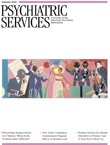Guyland: The Perilous World Where Boys Become Men
The book Guyland introduces the reader to a culture among America's 16- to 26-year-old young men. In a period of extended adolescence, these young men are largely avoiding the tasks of growing up, choosing a career, establishing a long-term relationship, and starting a family. Rather, they are entrenched in a buddy culture where the "Guy Code" of silence, protection, and entitlement reigns supreme. Proving their masculinity to friends is the ultimate goal, and bearing responsibility is still a thing of the future. In this land, these guys are anxious, uncertain, and lonely but are desperate to appear the opposite and be accepted among their male peers, no matter the cost.
Sociologist Michael Kimmel spent years interviewing hundreds of young men to gain insight into this culture. He wrote this book with the belief that adults need to understand this new world of boyhood-manhood in order to have intelligent conversation with the young men who populate it (and the young women who struggle to deal with its effects on their own lives). Believing that "boys will be boys" is both an archaic and unsafe notion of how to deal with the cultural influences that are shaping today's young men into tomorrow's husbands and fathers. Kimmel argues that we must intervene if we want our boys to become men (rather than "just guys") who do the right thing, stand up to injustice, express compassion, and show courage.
This book is about a specific segment of young men—namely white, middle-class, heterosexual guys who are in college, college bound, or immediately out of college. Kimmel admits this early on in the book and clarifies that not all—not even most—young men of this age participate in the extremes of Guyland culture. The title can be somewhat misleading, however, and would probably have better served the reader by identifying Guyland within the college campus culture rather than attempting to define the entire spectrum of 16- to 26-year-olds.
Although mental health professionals can benefit from the cultural insight provided by this book and gain a deep sense of the pressures faced by young men of this age—particularly those who do not fit into Guyland—the book seems better suited for parents, teachers, mentors, and others who engage these young men in everyday life and have the opportunity to help them challenge the assumptions of Guyland. In fact, it is those relationships that Kimmel points to as the most powerful force in the resilient stories of young men who survived being outcasts of Guyland.
Kimmel provides several specific examples of social norms programs that have successfully challenged excessive drinking (one of the hallmarks of Guyland) and that could be adapted to address hazing or sexual assault (other potential pitfalls of the landscape). He also encourages the involvement of adults in the lives of these young men so that conversations can take place that will help guys critically assess their thoughts, behaviors, and actions in light of what it means to really become a man in today's world.
The reviewer reports no competing interests.



